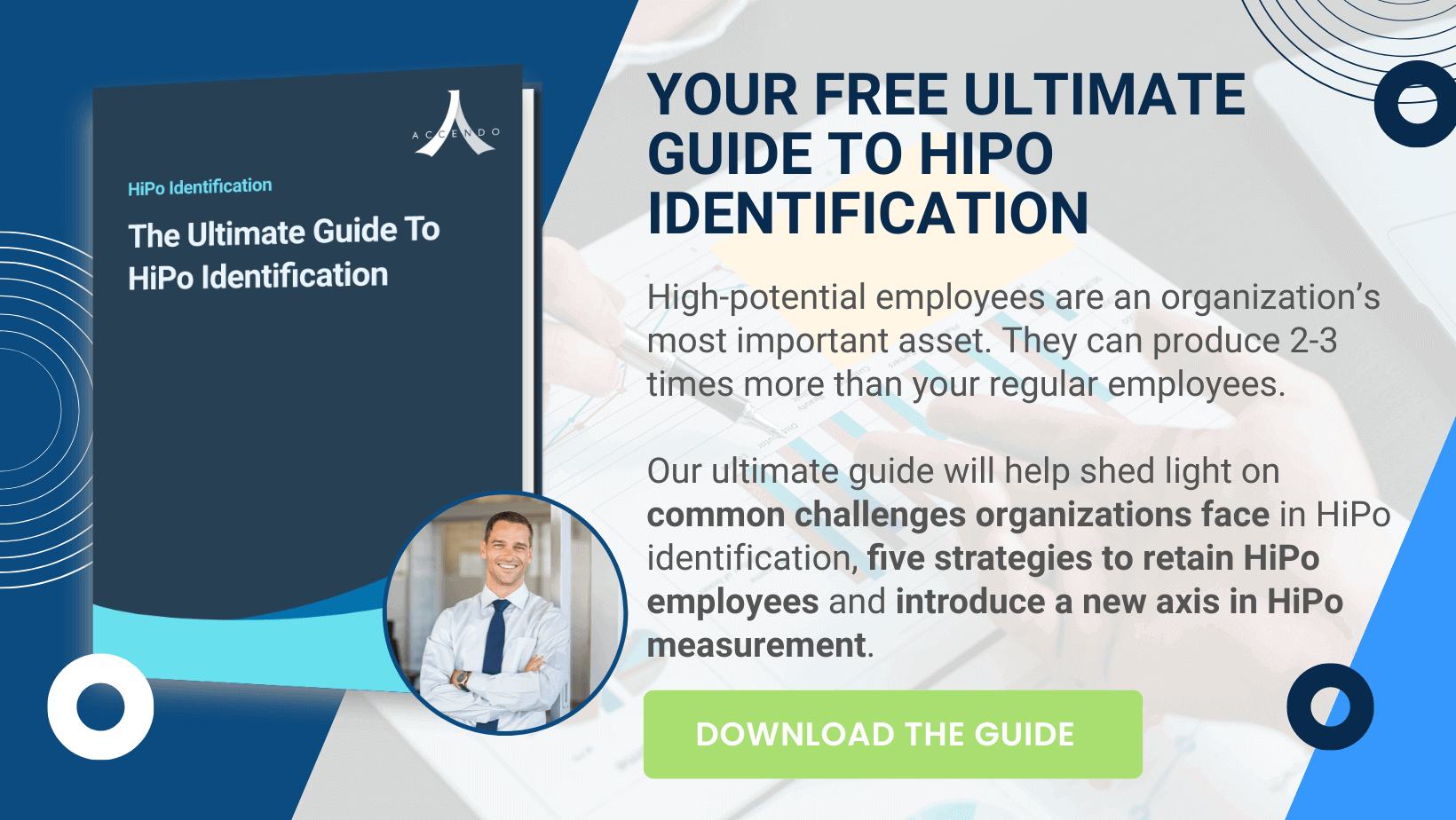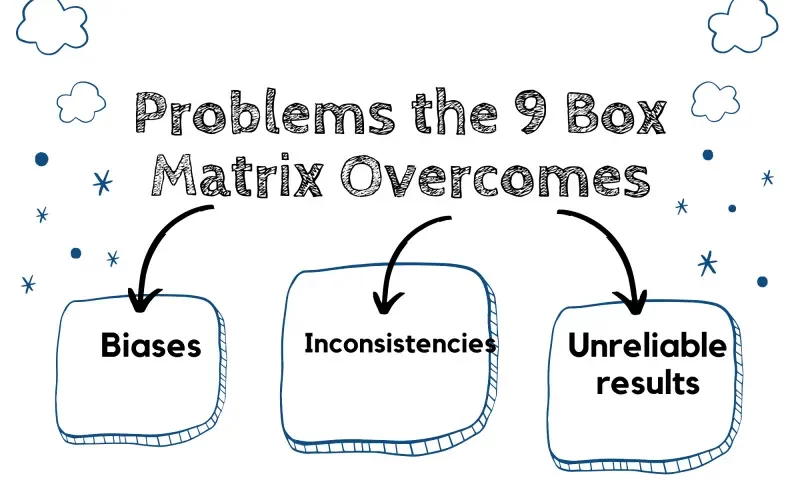With the growth of high-potential programs, organizations have started asking themselves if they’re hiring the right candidates. Are they getting high performers? Are they getting effective leaders? Are they getting strong emotional intelligence leaders?
Introduction
Recently, there has been a recent boom in the field of talent management. As this field has expanded, a nine-box grid with nine different dimensions has risen to the top and has been widely accepted as the best way of assessing an individual’s performance leadership potential.
The 9-Box Grid model for performance potential is an effective tool that has helped organizations categorize and visualize talents in an objective and orderly manner allowing talent identification to be done quicker.
It is a well-known tool for talent management, internal mobility, and succession planning.
Plotting employees against the performance potential matrix allows organizations to quickly see where their high potentials and high performers employees are to not miss taking action on them.
However, whilst this model has served organizations well for a long, it misses out on an important dimension of employee profile—passion.
The 9-Box Performance Matrix overcomes many of the commonly encountered problems during an employee’s evaluation. It includes:
Although the HiPos are tricky to find, a scientific study has suggested that developing and investing in them will maximize the company’s return on income. So, finding and retaining HiPos is the first step toward the company’s success.
The next step is to create leadership development plans.
Researchers from Harvard have asserted that companies with proper processes in place will recognize 3% to 5% of their employees as high-potential individuals who perform assigned tasks beyond expectations.
So, how can HiPo’s be distinguished within a company? Using a visually powerful tool like the Nine-Box Grid is an active matrix in identifying employees who are exemplary workers and have high potential.
What is a 9-Box Grid?
The 9-Box Grid is a particular evaluation method commonly used by organizations to assess their pool of talent. The employees’ assessment is centred around future leaders.
As the 9-Box Grid matrix proposes, the x-axis is the model for ‘performance,’ which signifies the employee’s work. The y-axis is the model for ‘potential’ and signifies the employee’s skills and behaviour.
Through the above-mentioned assessment criteria, leaders and managers will identify and determine where each employee fits in the Nine-Box Grid boxes.
We’ve described the differences between high-potential and high-performing employees in another post.
Challenges in Finding Employees’ Performance Potential via 9-Box Grid Approach
The use of matrix grid reports has declined in recent years, with the spread of 360-degree feedback and the development of other appraisal methods. Proponents of the model argue that the 9-box grid is simple and intuitive and does not require much training, making it suitable for any organization.
But, do the matrix grid reports still have an important role to play in finding employees’ performance potential via organizing and presenting data in a 9-box grid?
1. Not Contextualized
The first challenge with using a 9-box grid is that plotting people on one grid with 2 axes ignores the fact that each role is context-dependent.
An individual’s performance, potential, and competency are completely dependent on their current role, function, department, and circumstances, which completely differ from person to person that you plot, even if they are in the same team.
As a result of the measurements not being contextualized, comparing people on the same grid may yield inaccurate results and wrong talent decisions.
2. No Further Outcome
Oftentimes the process of building a 9-box grid ends with the grid being completed when it shouldn’t.
A 9-box merely gives leaders a view into where people are in an organization and the next steps should be proper talent discussions, decisions, and developments.
Great talent management is all about movement—moving up, around, in, and out, and yet when using the 9 Box Grid, leaders often fail to generate that movement and use it more for allocation.
3. It can’t keep pace
Not only is the process of building a complete 9-box grid time-consuming and taking shortcuts leads to questionable results, it just doesn’t mirror the true pace of most organizations.
A leadership competency model built manually by HR teams seems to always be out of date by the time it is complete and leaders who want to move quickly to recruit or promote fall back to gut feel.
So when leaders talk about agile business models and agile talent, yet HR does not have an agile way to build 9-box models, HR starts losing credibility for not keeping pace.
Including Passion into the Performance Potential Matrix
One of the biggest critiques of the using 9 Box Grid Matrix as a diagnostic tool is the limitation of being able to only observe employees through 2 lenses, performance, and potential, sometimes causing competency gaps.
While HiPo’s excel in both, they also possess a third trait that allows them to be stretched in their current role, and that is passion.
Passion is the inherent motivation and drive to stay in the game for the long run.
Adding a third lens, or a Z-axis, allows organizations to look at employees in terms of their work performance, the potential for leadership, and the passion to grow in the company.
As per the Deloitte report, almost 88% of employees are not happy with their job.
How HiPos with Passion Help Organizations
Here are 3 reasons why finding HiPOs with strong passion will help your organisation:
1. They Improve Others
Passionate HiPo’s do not only constantly strive to develop their skills, but they also take it upon themselves to help their peers improve as well.
Passion, more often than not, is a sharable trait. A passionate worker creates a healthy work environment in which productivity strives.
Passionate HiPos understand that for the organisation to be successful, many people have to do their work at a high-performing level and the natural tendency for HiPos to lead makes them influence others.
2. They Go Beyond Their Job Description
Passionate HiPos are also more willing to work extra hours, do extra tasks, and even learn extra skills much above their set job description.
Since they have a more personal interest in succeeding in the company, they tend to improve on and learn the job matters even outside work hours. Employees that genuinely love what they do can go out of their comfort zone which means doing something they are not so used to.
This also benefits the company because the employee is developing new skills that can be applied to multiple roles making the employee prime for internal mobility.
3. They Will Stay
If your passionate HiPos are happy and satisfied with their job progression, career visibility, and the development environment surrounding them, they will stay with you.
Companies should cherish these HiPos because it is not easy to identify among a large pool of employees those that are high performing, have high potential, are passionate, and are loyal.
Long-term employees are trustworthy because they have already proven their loyalty to you. Give them enough possibilities to challenge themselves professionally and intellectually, and reap the benefits of a long-tenured HiPo.
So when leaders talk about agile business models and agile talent, yet HR does not have an agile way to build 9-box models, HR starts losing credibility for not keeping pace.
Conclusion
Employers everywhere are facing a problem: finding and keeping the best talent in their respective fields. Executives are scrambling to create the right compensation and incentive packages, develop sound leadership strategies, and provide the workplace environment that their employees will want to stay with for years to come.
Many believe that offering generous compensation packages is the solution, but unfortunately, this is only a temporary fix. Whilst traditionally the standard 9-box grid has served organizations well to help identify and classify employees by their current performance and potential, we now need to introduce passion as a 3rd axis.
It’s not only about the can-do and will-do of your employees but also how much they want to do it. Many companies fail to see ROI from HiPo programs because after 12-18 months of leadership development, their HiPo’s leave. This means that despite receiving a great deal of focus from the organization, they did not have the passion for growth there.
Use passion in selecting your HiPos and you will find that HiPos that have a strong drive to succeed in your organization will bring great value over time.
Related queries
What is a 9-box grid performance vs potential
The 9-box grid is a talent management tool used to assess an organization’s employees based on their performance and potential for future growth and development. The grid divides employees into a 3×3 matrix, with performance measured on the horizontal axis and potential on the vertical axis.
What is a performance-potential matrix successfactors?
The performance-potential matrix, also known as the 9-box grid, is a useful tool for talent management in organizations. It is a useful tool for organizations to identify and invest in their high potential talent and make informed decisions about talent development and succession planning.
What is potential versus performance matrix?
The potential versus performance matrix, also known as the performance-potential matrix or the 9-box grid, is a talent management tool used by organizations to assess employees based on their performance and potential for future growth and development.
How can you measure performance and potential?
It’s important to note that measuring performance and potential is not an exact science and requires a combination of objective and subjective measures. Organizations should use a variety of methods to evaluate employee performance and potential, and should regularly review and update their talent management strategies to ensure they are effective and aligned with the organization’s goals and objectives.
Page Contents









